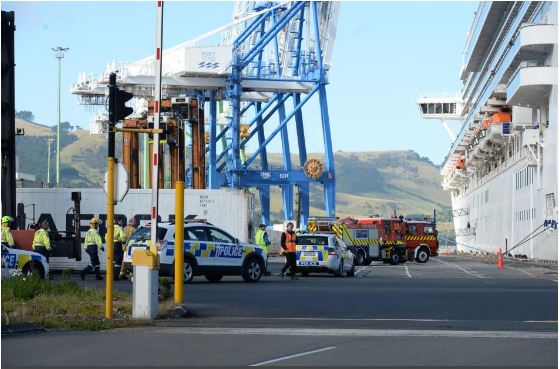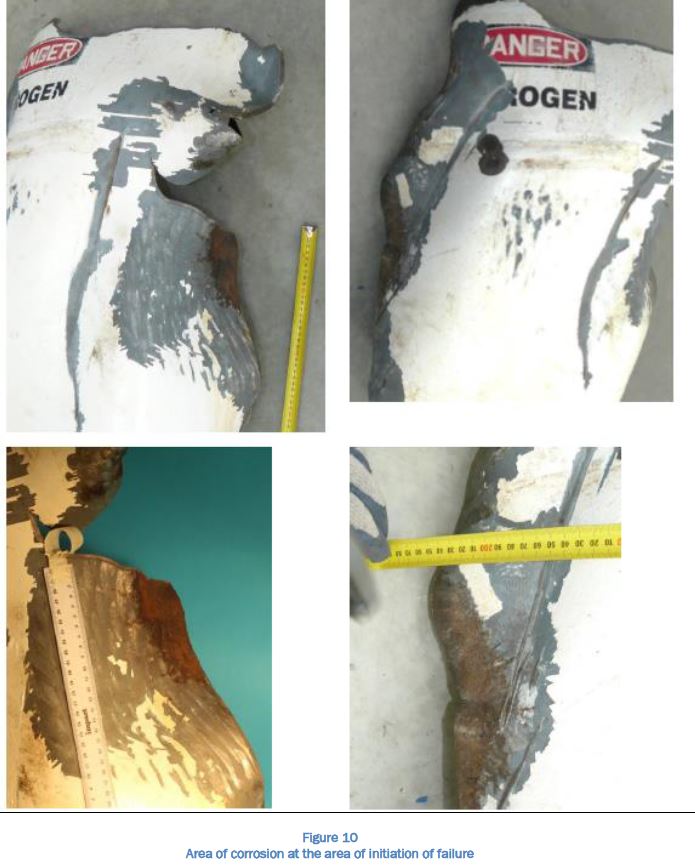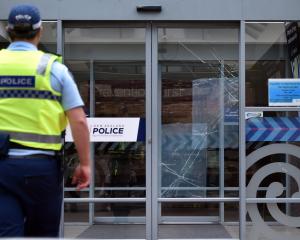A death on board cruise ship the Emerald Princess was caused after severe external corrosion caused a nitrogen cylinder to burst - and has prompted warnings worldwide standards are urgently needed for maintaining, inspecting and testing the cylinders.
A final Transport Accident Investigation Commission report into the accident on February 9, 2017, has been released this morning.

The Emerald Princess – operated by the Bermudan-registered firm Princess Cruise Lines Limited – was docked at Port Otago carrying 3115 passengers on a tour between Australia and New Zealand.
While docked, the vessel's crew members were tasked with checking the pressure of nitrogen cylinders - used to launch lifeboats in the event of an emergency.
Allan Alarde Navales and Bernabe Santos carried out the maintenance work on boat 24, filling the canisters to the required level.
Once it had been refilled, Mr Navales instructed Mr Santos to start the hydraulic system.

Mr Navales, standing beside it, was killed.
A summary of the report said the cylinder - and several others - were "not fit for purpose" - and should not have been in service.
"The commission also found that there is an urgent need for consistent and proper standards to be developed at a global level for maintaining, inspecting, testing and, where necessary, replacing high-pressure cylinders associated with stored energy systems on board ships."

Chief investigator of accidents Captain Tim Burfoot said in a statement there was ``a wide variation in, and sometimes inadequate, standards applied by flag state administrations, classification societies and authorised service providers''.
The commission identified a key lesson as being high-pressure cylinders should be fully investigated by a person competent to examine them before any remedial work is undertaken and the cylinders went back into service.
In the Dunedin District Court in November last year prosecutor Dale Lahood argued for a reparation figure of more than $800,000 after Princess Cruise Lines pleaded guilty to a charge of causing a maritime product to be maintained or serviced in a manner that caused unnecessary danger or risk to other people.
Mr Lahood said Mr Navales' family were living in poverty in the Philippines and his wages were a significant crutch for them.
He told the court the victim had a sick mother, a sibling with an intellectual disability, one with a hole in their heart and a sister now caring for two children alone.

However, he disputed the reparation amount, saying aspects of his calculation were speculative.
The court heard the faulty cylinder had been inspected by the manufacturer just three weeks before the fatal incident.
While it accepted the cylinders were aged, they were considered "fit for purpose".
In the report released today the commission identified a key lesson as being high-pressure cylinders should be fully investigated by a person competent to examine them before any remedial work is undertaken and the cylinders went back into service.

"The cylinder burst because a region of severe corrosion reduced the cylinder wall thickness from about 4.81 mm to 1.45 mm and significantly compromised the cylinder’s ability to withstand internal pressure.
"As a result, the cylinder suffered an overpressure burst while the crew attempted to raise the nitrogen pressure from 160 bar to its normal working pressure of 200 bar"
There seemed to be no clear reason why that cylinder was affected and those around it were not heavily corroded, but there could be several reasons why corrosion might accelerate, including mechanical damage to the protective coating in a saltwater environment, and seawater being trapped against a steel surface.
Hydrostatic pressure testing of the cylinders on board the Emerald Princess was scheduled to be carried out every 10 years, meaning the cylinders were due to be tested later in 2017.
Since the cylinder that burst was actually manufactured a year and five months before it was installed, the commission found it was overdue for testing by about 17 months at the time of the accident.
"If the failed bottle had been inspected and tested by a competent authority 17 months earlier, it is very likely that it would have been condemned and the accident avoided.
"The depth of the corrosion in the cylinder wall was such that it almost certainly would have been prevalent 17 months earlier."
The operator had now addressed that issue and had updated its maintenance plan so it tracked the age of each cylinder based on its manufacture date, rather than its installation date.
"Ten years is a long time between testing, particularly for cylinders that are exposed to a seawater environment," the report found.
"Authorities might need to consider reducing this period in some circumstances, or at least having a more rigorous inspection regime to detect any early onset of corrosion."











